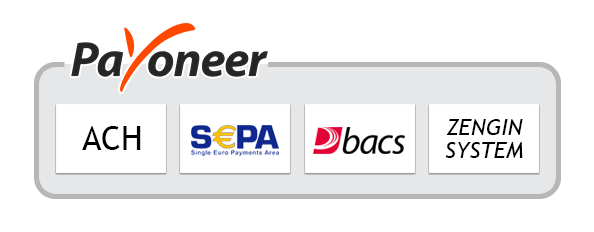Table of Contents
Introduction
The Global Ceramic Machinery Market is projected to reach approximately USD 9.5 billion by 2033, up from USD 5.6 billion in 2023, growing at a compound annual growth rate (CAGR) of 5.40% during the forecast period from 2024 to 2033.
Ceramic machinery refers to the equipment and tools used in the manufacturing of ceramic products, including tiles, sanitary ware, pottery, and advanced ceramics. This machinery encompasses various stages of ceramic production, including raw material processing, molding, shaping, firing, glazing, and finishing.
Key machinery types include mixers, extruders, kilns, dryers, presses, and glazing systems. The ceramic machinery market, therefore, comprises the market for equipment used throughout the production process of ceramic goods. This market is significantly influenced by the growing demand for ceramic materials in construction, automotive, and electronics industries, as well as advancements in material science that require precision machinery for production.
Growth factors driving the ceramic machinery market include the expansion of the construction sector, especially in emerging economies, where urbanization and infrastructural development are at the forefront. Additionally, technological advancements in ceramic production, such as the adoption of automation and robotics, have contributed to market growth by enhancing efficiency and reducing labor costs. The demand for energy-efficient, sustainable, and high-performance machinery is further propelling the sector.
As consumers seek eco-friendly building materials and increasingly sophisticated ceramics, there is a rising demand for advanced machinery that can meet these specifications. Furthermore, emerging opportunities lie in the development of smart ceramics and the rise of digital printing techniques in ceramic design, opening up new avenues for growth. With an expanding global market for ceramics across various sectors, ceramic machinery is poised for sustained demand and innovation.

Key Takeaways
- The global ceramic machinery market is projected to reach USD 9.5 billion by 2033, up from USD 5.6 billion in 2023, growing at a CAGR of 5.40% from 2024 to 2033.
- The Asia-Pacific region leads the market, holding a dominant 42.8% share.
- Kilns and firing equipment are the largest segment, comprising 28.4% of the market.
- The tiles and bricks application category holds the largest share, at 45.3%.
- The construction industry is the primary end-user, accounting for 35.2% of ceramic machinery demand.
Report Scope
| Report Features | Description |
|---|---|
| Market Value (2023) | USD 5.6 Billion |
| Forecast Revenue (2033) | USD 9.5 Billion |
| CAGR (2024-2033) | 5.40% |
| Segments Covered | By Type of Machinery(Pressing and Molding, Kilns and Firing, Glazing and Decorating, Cutting and Polishing , Grinding Machinery, Others), By Application(Tableware and Kitchenware, Sanitaryware, Tiles and Bricks, Technical Ceramics, Others), By End-Use Industry(Construction, Automotive, Aerospace, Healthcare, Electronics and Electrical, Others) |
| Competitive Landscape | Händle GmbH Maschinen und Anlagenbau, KEDA Clean Energy Co., Ltd., System Ceramics S.p.A., BMR Italia S.r.l., Sama Maschinenbau GmbH, Breton S.p.A., EFI Cretaprint, Kajaria Ceramics Limited, CMF Technology S.r.l., Manfredini & Schianchi Srl, LAMGEA S.p.A., Sacmi Group |
Emerging Trends
- Automation & Robotics: Ceramic manufacturers are increasingly adopting automation technologies, including robots for material handling, glazing, and packaging. Automation helps reduce labor costs and improve precision in manufacturing processes.
- Energy Efficiency: There is a strong focus on energy-efficient ceramic machinery, which minimizes energy consumption during the firing and drying processes. This trend is particularly noticeable in countries with strict energy regulations.
- Digitalization and IoT Integration: The adoption of digital technologies and the Internet of Things (IoT) is rising in ceramic production. This allows manufacturers to monitor machine performance in real time, predicting maintenance needs and optimizing production schedules.
- Advanced Firing Technologies: New kiln designs are focusing on higher energy efficiency and reduced emissions, with advanced technologies like electric and hybrid kilns taking the lead. These innovations help improve overall product quality and reduce environmental impact.
- Customization in Machinery: As demand for bespoke ceramic products rises, manufacturers are investing in customizable machinery. Flexible equipment allows for varied production runs, accommodating different sizes, shapes, and finishes.
Top Use Cases
- Tile Production: Ceramic machinery is heavily used in the production of tiles, particularly for floor and wall applications. Automation systems in tile presses and dryers are improving the speed and consistency of production.
- Pottery & Fine Ceramics: Small-scale pottery and fine ceramics industries are benefiting from advanced machinery, like automatic forming machines and glazing robots, which enhance craftsmanship while speeding up the manufacturing process.
- Tableware Manufacturing: Ceramic machinery plays a crucial role in the manufacturing of high-quality tableware. Machinery for shaping, firing, and decorating is often tailored for precision, which is key in producing aesthetic yet durable products.
- Sanitary Ware: The sanitary ware segment, including products like sinks, bathtubs, and toilets, relies on advanced machinery for casting, molding, and finishing. Automation reduces defects and improves production efficiency.
- Technical Ceramics: Advanced ceramic machinery is used in the production of technical ceramics, such as components for electronics, automotive, and aerospace industries. These products require high precision and specialized processes like extrusion and sintering.
Major Challenges
- High Initial Investment: The cost of acquiring advanced ceramic machinery can be a significant barrier for small to medium-sized manufacturers. While long-term savings are possible, the upfront investment can be a financial strain.
- Complexity in Operation: Some of the new, highly automated machines require specialized training. Operators need to understand both the machinery and the digital technologies that accompany it, which can add to operational complexity.
- Supply Chain Disruptions: Supply chain challenges, particularly in sourcing raw materials and machine components, can affect production schedules. Manufacturers often face delays due to the reliance on global suppliers for key machine parts.
- Maintenance Costs: While advanced machinery is built for high efficiency, maintenance costs can be significant. Components like kiln burners, presses, and drying systems require regular upkeep, which can add to the operational cost.
- Environmental Regulations: Stringent environmental standards for emissions, waste disposal, and energy consumption are pushing manufacturers to upgrade to eco-friendly machinery. Compliance with these regulations can require costly upgrades.
Top Opportunities
- Sustainability and Green Technologies: There’s growing demand for ceramic machinery that supports sustainable manufacturing practices. This includes energy-efficient kilns, waste recycling systems, and low-emission equipment.
- Emerging Markets Growth: The expansion of the ceramic industry in emerging markets like Asia-Pacific, Latin America, and Africa presents opportunities for machinery manufacturers. Increasing urbanization and construction activities are driving demand for ceramic products.
- Customization of Equipment: As ceramic manufacturers seek more flexibility, there’s an opportunity for equipment producers to offer customizable solutions. This could include modular designs that adapt to different production scales and product types.
- Smart Machinery: The integration of AI and machine learning for predictive maintenance and performance optimization is a growing opportunity. Smart ceramic machinery can predict failures, reduce downtime, and improve productivity.
- Collaborations with Research Institutes: Collaborating with research institutions to develop new, cutting-edge technologies, such as 3D printing in ceramics or nano-material production, offers opportunities for innovation in the machinery sector.
Key Player Analysis
In 2024, the global ceramic machinery market is expected to be heavily influenced by key players with diversified technological advancements. Händle GmbH, with its cutting-edge automation and highly efficient machinery, remains a dominant force, ensuring high precision and productivity in ceramic production. KEDA Clean Energy Co., Ltd., focusing on energy-efficient solutions, will continue to lead in sustainable technologies, aligning with the industry’s green transition.
System Ceramics S.p.A. is well-regarded for its innovations in digital printing and robotic systems, enhancing ceramic design capabilities. BMR Italia S.r.l. specializes in high-performance grinding and polishing technologies, offering premium quality solutions for ceramic manufacturers. Sama Maschinenbau GmbH’s commitment to precision engineering makes it a strong player in high-end equipment. Breton S.p.A. stands out for its advanced stone processing technologies, contributing to ceramic production with quality and versatility.
Meanwhile, EFI Cretaprint’s digital printing technology is setting new standards in decoration. Kajaria Ceramics Limited, alongside global players like Sacmi Group and CMF Technology S.r.l., continues to push the envelope in terms of production capacity and technological evolution. Each of these companies will drive innovation and competitiveness within the ceramic machinery market, cementing their positions as key stakeholders in 2024.
Top Market Key Players
- Händle GmbH Maschinen und Anlagenbau
- KEDA Clean Energy Co., Ltd.
- System Ceramics S.p.A.
- BMR Italia S.r.l.
- Sama Maschinenbau GmbH
- Breton S.p.A.
- EFI Cretaprint
- Kajaria Ceramics Limited
- CMF Technology S.r.l.
- Manfredini & Schianchi Srl
- LAMGEA S.p.A.
- Sacmi Group
Regional Analysis
Asia-Pacific – Ceramic Machinery Market with Largest Market Share (42.8%)
The Asia-Pacific region is poised to dominate the global ceramic machinery market, accounting for a substantial 42.8% share in 2024, valued at approximately USD 2.4 billion. This region’s stronghold can be attributed to the rapid industrialization, expansive manufacturing capabilities, and increased demand for ceramic products across major economies like China, India, and Japan. In particular, China is the largest contributor to the region’s market growth, thanks to its booming construction and manufacturing sectors.
Additionally, the rising consumption of ceramics in industries such as automotive, electronics, and healthcare further fuels market expansion. The growing adoption of advanced ceramic machinery technology, driven by the need for enhanced production efficiency and quality, is also a key factor propelling growth. As the largest market, the Asia-Pacific region continues to lead the global ceramic machinery market, with promising growth projections for the near future.

Recent Developments
- In 2025, KEDA Industrial Group continues to drive its core principle of “Relentless Pursuit of Innovation,” inspiring its employees to reach new technological heights. Over the years, KEDA’s engineering team has boldly embraced challenges, achieving major technological breakthroughs and expanding the limits of what’s possible in the industry.
- In 2024, SITI B&T Group launched INNOVA, a revolutionary digital line developed by Projecta Engineering. This fully flexible, modular system is designed to take digital printing to the next level, offering unparalleled creative freedom for producing unique graphic designs in various sizes.
- On September 19, 2023, ION Storage Systems announced a multi-year partnership with Saint-Gobain Ceramics, a leader in ceramic materials. This collaboration focuses on advancing energy solutions for electric vehicles and battery technologies, contributing to a cleaner, more sustainable future.
- On August 8, 2023, Kyocera unveiled INNOVATIONwhite™, a line of ceramic kitchen knives designed by Yohei Kuwano. With vibrant color options and exceptional craftsmanship, these knives are now available exclusively on Indiegogo for a limited time.
- On February 29, 2024, Villeroy & Boch completed its acquisition of Ideal Standard, reinforcing its position as one of Europe’s largest bathroom product manufacturers. This acquisition strengthens both companies’ reach, creating a powerful network of production and distribution.
- On August 10, 2023, Coherent Corp. introduced an advanced additive manufacturing process for creating high-performance ceramic components. This innovative technique is set to play a crucial role in the thermal management needs of next-generation semiconductor equipment.
- In 2023, IDEX completed its acquisition of STC Material Solutions, a provider of specialized technical ceramics and sealing products. With a focus on critical industries like aerospace, defense, and medical technology, this acquisition expands IDEX’s ability to deliver innovative solutions to mission-critical applications.
Conclusion
The global ceramic machinery market is poised for steady growth driven by technological advancements, increasing demand for high-performance materials, and the expansion of industries such as construction, automotive, and electronics. As manufacturers continue to adopt automation, energy-efficient solutions, and digitalization, the industry is evolving towards more sustainable and innovative production processes. The Asia-Pacific region remains the dominant market, fueled by rapid industrialization and a strong manufacturing base. Despite challenges such as high initial investments and operational complexities, the rising demand for custom and eco-friendly machinery presents significant opportunities for market players. With ongoing advancements in ceramic production techniques and a focus on reducing environmental impact, the ceramic machinery market is expected to witness continuous innovation and robust demand in the coming years.
Discuss Your Needs With Our Analyst
Please share your requirements with more details so our analyst can check if they can solve your problem(s)





